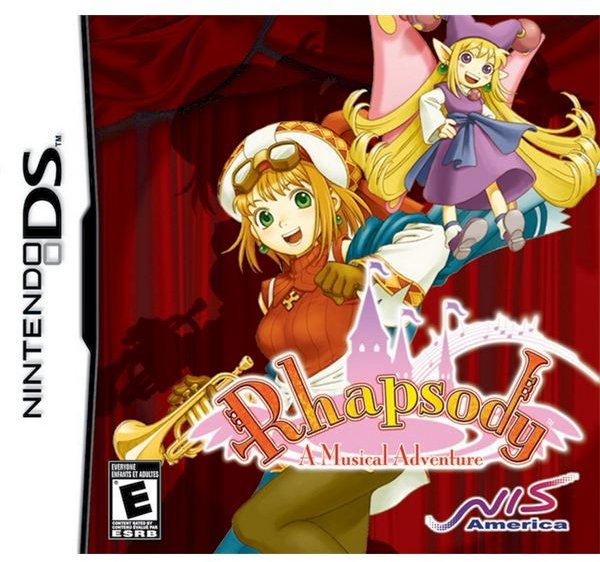Review of Rhapsody (DS)

Living up to its name, Rhapsody: A Musical Adventure is a traditional RPG in which the characters occasionally break out into song, much like an old-time stage musical or an animated Disney film. It stars Cornet, a young girl from a backwoods village who can talk to puppets, and who one day has a chance encounter with a prince. It’s love at first sight, and much of the early part of the game surrounds Cornet’s attempts to woo her beau with the help of best puppet pal Kukuru – that is, until an evil which winds up kidnapping him. That’s when the gloves come off and the adventure really begins, as Cornet teams up with Kukuru and a small army of battle-ready marionettes and ventures off to save the man of her dreams so the two can live happily ever after.
It may sound a lot like your typical fairy tale or Disney flick, and in many ways it is. Make no mistake, though, this is a Nippon Ichi game through and through. Those who are unfamiliar with this developer’s previous work should expect a mix between anime-esque humor and sweet, poignant moments (in this game, the work skews more towards the latter than the former). For the NIS veterans out there, go into Rhapsody expecting something closer in tone to La Pucelle or Phantom Brave than Disgaea. The humor is there, but it is sparse, and while there have been some new side quests and story scenarios added to the DS version of this game (a port of a previous PlayStation game first brought to the U.S. by Atlus in 2000), it is definitely a fluffy experience, lacking the depth of other NIS works.
As mentioned above, the DS version of this game is essentially a remake of a game released for the original PlayStation. In that version of Rhapsody, players could select between English and Japanese versions of the vocal tracks. Unfortunately, due to space limitations, NIS America had to choose between the two languages. They opted to keep the Japanese originals, which is a disappointment because the English versions were quite good, and because while this move may appeal to the developer’s core fan base (i.e. the people who would’ve bought the game anyway), it will unnecessarily limit the enjoyment that a broader audience could have had playing this title.
Another change from the original is the combat system. In the PlayStation version, battles were conducted in a stripped-down tactical RPG style. This time around, that engine has been scrapped and replaced with a basic turn-based system, reportedly to keep it in line with Rhapsody’s Japan-only sequels. The results are mixed. Now, battles are much quicker, but they also seem to be less enjoyable. Battles are also quite easy. In fact, the difficulty is so low that the included auto-battle feature is enough to see players through 99% of the game’s fights. Characters regain full health and magic points each time they level up, which they will do quite frequently. In fact, the only really challenging battle in the entire game comes right near the end.
That said, Rhapsody: A Musical Adventure is a good, lighthearted game that does a lot of things right as well. It makes good use of the DS’s dual screens, providing a useful map on the top screen when exploring and providing a pleasing layout and optional touch screen commands during combat. Plus it has a save anywhere feature, which is an absolute must for those who like playing their RPGs in doctor’s offices or during bus rides. While it does suffer from a lack of difficulty and an occasional lack of direction, Rhapsody is definitely worth checking out, especially for those looking for a break from the typical save-the-world norm in their roleplaying games. Rent it if at all possible, though, because the game is only 10-15 hours long, tops, and veteran RPG fans will probably blow through it quicker than that.
Images
Conclusions
Rhapsody: A Musical Adventure (DS)
- ESRB Rating: E for Everyone
- Publisher: NIS America
- Official Website: https://nisamerica.com/games/rhaps/
- Rating: Worth a Rental (65/100)
